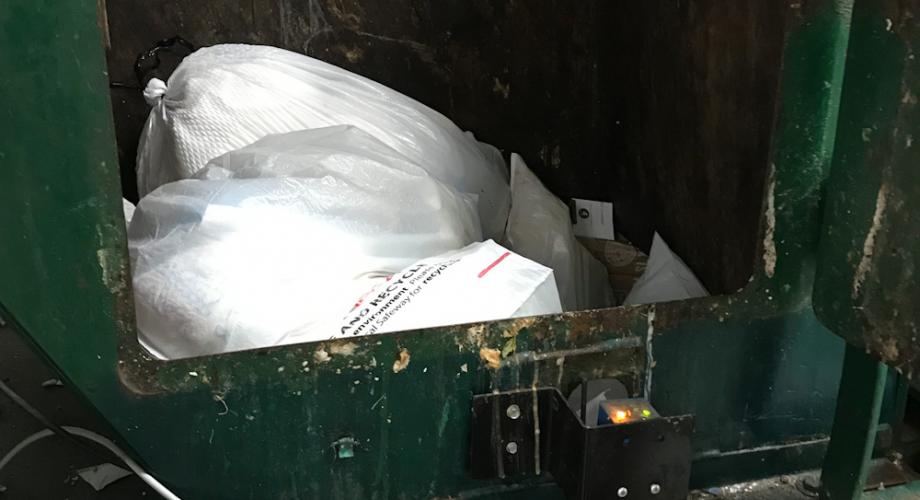Waste-hauling costs are increasing and recycling policies are becoming stricter. Apartment operators are seeing the effects and are taking a variety of steps to improve efficiency and cost-effectiveness. In Part 7 of this 13-part, in-depth report, we examine the role of trash compactors play in onsite waste management.
The manual vs. auto-push button debate is a pressing one.
Trash compactors are the blood and guts of a community’s waste operations. Managed by the maintenance team, a compactor is either their best friend or becomes an unwanted daily time-suck. This operational facet works well when residents are educated about sorting and do so accordingly. However, not all residents get it. Maintenance supervisors are left to decide the merits of using auto-cycling trash compactors or those that are manually operated.
Donald Campbell at Cass Information Systems, a firm that acts as an extension of their customers’ waste and recycling teams with hauler/vendor agnostic managed services for apartment companies, says that of new compactor rentals, nearly half include the auto-cycle feature. That number has been consistently increasing during the past few years. Auto-cycle means the compactor can be set to operate at given intervals, which helps to manage potential overflow and avoids the need to have a maintenance tech “on the clock” during weekends, for example.
“The trend is definitely going up from even a few years ago,” Campbell says. “Apartment community managers and maintenance staff historically believed manual control was a best practice, but with the introduction of new technology in auto-compaction and sensors, there has been a change in the way sites utilize compactor equipment.
He says that the main benefit is that the compactor is being cycled automatically based on the number of times the trash door is being open and shut and not just when someone pushes a button.
“Not only does this ensure that the trash is being compacted on a regular and consistent basis to prevent trash overflows and jams in chutes, but for many properties, it also frees up maintenance staff who are currently relegated to manually cycling the compactor to perform other functions on the property. Auto-cycle features also reduce the wear and tear on the unit, therefore reducing repair cost throughout the life of the equipment.”
These compactors cost roughly $25,000 to $30,000, Campbell says. Adding an auto-compaction feature to an existing compactor costs are based on what is needed to retrofit the compactor. It ranges from $1,000 to $3,500, approximately. The simplest implementation would be in a compactor that already has a single-feed door with magnetic interlock; adding this feature requires adding and installing this module to the compactor’s system. More expensive systems are needed for compactors that currently do not utilize a trash door such as an open-hopper system.
Some maintenance technicians oppose additional spending for the auto-cycle. One says staff can be easily trained on its operation, and consistent monitoring of the system will suffice. He adds that apartment communities generally have skeleton crews working during weekends and they are capable of pushing the button.
Camden uses trash compactors at 110 of its properties. (Camden installs them at all new developments). For those that don’t have compactors, there are 15 to 18 front-load containers, which are picked up three times per week.
Pippin says that Camden compactors help communities to save money (only one weekly pick-up instead of two or three) and they make better use of the space.
“I can save on maintenance costs and on pavement and concrete repairs because there is less constant pounding,” Pippin says. “We also don’t have to deal as much with replacing busted gates. And the bottom line, I see that my waste-hauling bill decreases by about 18 percent.”
“In some of our cities, compactors cost significantly more, so I have taken compactors out and reduced costs by 30 percent while increasing recycling diversion. In other areas, we have added compactors because if you have a market where you can have your compactor dumped only when it’s full, you can achieve real cost savings.”
For Cortland, renting equipment is far more cost-effective than owning it, Jana Alfiero says. “You never know what can happen to your equipment,” she says. “If you buy a compactor, and a rodent sneaks in and eats the wiring, you could be looking at a $3,000 repair bill. If you rent, the company that provided it maintains and repairs it.”
Back to the Trash Talking in-depth report or read the part 8 story: How Signage and Resident Education Makes a Big Difference.
